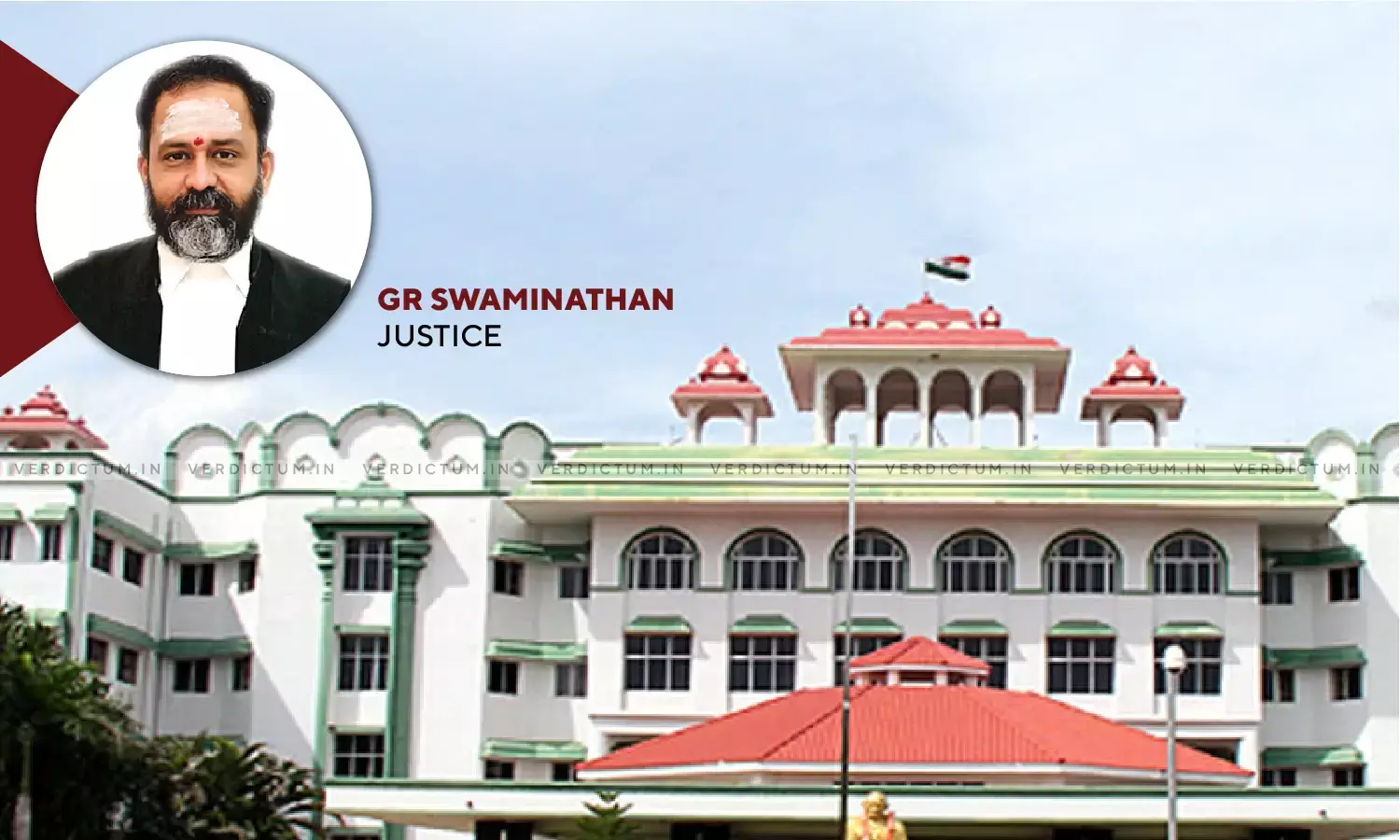'Any River Has Memory And When It Remembers, Consequences Will Be Calamitous:' Madras HC In Plea Against Road Project On Tank Bunds

"Any river has memory and when it remembers, the consequences will be calamitous.", the Madras High Court remarked while dealing with a writ petition filed by a lawyer objecting to the implementation of some road projects on tank bunds.
The Madurai Bench referred to the “The Arab And The Camel” story in which the moral was, “give an inch and they will take an ell”.
A Single Bench of Justice G.R. Swaminathan observed, “The residents of Madurai are witness to the fact that there has been a substantial encroachment on Vaigai river bed by construction of link road. Any river has memory and when it remembers, the consequences will be calamitous. Integrity of water bodies is as important as national integrity. Article 51 A(g) states that it shall be the duty of every citizen of India to protect and improve the natural environment including the lakes and rivers. Judges are citizens and we have an obligation to discharge this fundamental duty while adjudicating environmental cases.”
The Bench noted that in Madurai, the last fifty years have seen disappearance of many water bodies and in Avaniyapuram locality, there was a very large tank. It said that the Tamil Nadu Housing Board put up its apartments there and that the Madurai Bench of the Court itself has been built on Ulaganeri Lake.
In this case, the petitioner lawyer objected to the implementation of two projects that involved the formation of road on the bunds of two very large water bodies viz. Thenkal Kanmoi near Thirupparankundram and Vandiyur Kanmoi. However, the petitioner was not fully armed with all the details.
The High Court in the above regard said, “The Arab And The Camel” is a well known story. It was a cold night. The master was sleeping inside the tent. The animal was tied outside. It peeped inside and requested the master to allow it to keep its neck inside. The master felt pity and granted permission. After a while, it again whispered “Master, can I keep my forelegs too inside?.” The master relented again. All of us know what happened ultimately. The moral of the story is “give an inch and they will take an ell.”
Justice Swaminathan said that if he was to imagine that he is writing a story and not a judicial order, he would give this title: “It all started with the bund”. It added by saying that the civic authorities have been endowed with a sense of black humour.
“The Corporation Eco Park has been created after destroying a tank. The District Court is no exception. Many many government buildings have come up on Kanmois (water bodies). The Deity of Development is not yet satiated. She wants to gobble up more and more of Nature. The recent battering which the State of Tamil Nadu got from Mother Nature has not sufficiently driven the lessons home”, it noted.
Furthermore, the Court observed that the petitioner can be faulted for not coming to the court earlier but then the yardstick that one applies should not be applied in the case of environmental litigation. It said that the laches should not be allowed to be raised as an objection and on the other hand, the burden of justification should be placed on the government/administration/project proponent.
“The court should not glibly accept the assertions of the respondents. … The law officers occasionally even point to the installation of “No entry” board. Whenever the government takes shelter behind the defence of policy decision, I feel I am facing a “Do not disturb” sign hanging outside a hotel room. When it comes to environmental matters, courts ought to ignore such objections and go beyond to probe deeper”, the Court emphasised.
The Court said that the roads are being laid on tank bunds and the question is whether on tank bunds, roads can be laid. “To me, the answer has to be in the negative”, it added.
The Court also observed that development and environmental protection are said to be competing values and that the courts must bat for sustainable development i.e., a sort of compromise must be struck but such balancing is not possible in the case.
“The authorities do not appear to have conceived of any alternatives. The first question that must be posed is what is the purpose of the project. It is not known if the authorities bothered to explore the alternatives. I can understand sacrificing something fundamental for supreme public interest such as national security. But the case on hand does not appear to fall under such a category. In fact, the submissions of the learned Additional Advocate General as well as the learned Senior Counsel appearing for the contractor did not suggest anything of that kind. I felt that probably to spend the available funds on some pretext, the bunds became the casualty”, the Court remarked.
Accordingly, the High Court granted an order of injunction and directed that the papers be placed before the Chief Justice as there was a difference of view between Justice B. Pugalendhi and Justice Swaminathan.
Case Number- WP(MD)Nos.31214 & 31221 of 2023 and WMP(MD)Nos.26743 & 26752 of 2023


